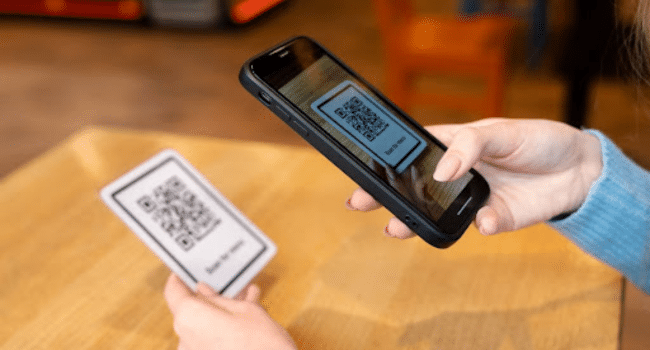Table of Contents
Nowadays, digital payments have moved from being a convenience to becoming a necessity. As more people depend on mobile devices for daily transactions, technologies like NFC and QR codes have played an essential role in transforming how we pay and receive money.
These technologies are not only making payments faster and safer but are also helping e-wallets become a major part of our financial lives. In this blog, we will discuss how NFC and QR are changing the e-wallet technology.
So, let’s begin!
What is the Role of NFC in E-wallets?
NFC technology has changed e-wallets by making contactless payments seamless. Instead of carrying cash or cards, users can simply click on their mobile phones or smartwatches at a payment terminal to pay. This ease of use has been a game-changer for busy urban areas where speed matters.
Another benefit of NFC in e-wallets is security. NFC payments are encrypted, and many e-wallet apps require additional authentication. This minimises the risk of fraud compared to traditional card payments.
Moreover, NFC has enabled the rise of wearable payments. Smartwatches and fitness bands with NFC chips allow users to make payments on the go. This adds convenience for those who want a completely wallet-free experience.
What is the Role of QR Codes in E-wallets?
QR codes have had an equally significant impact on the eWallet. They are especially useful for small businesses, street vendors, and situations where NFC terminals may not be available.
With a QR code, merchants can receive payments without investing in expensive hardware. The customer simply scans the code using their eWallet app and transfers the money.
QR codes also make peer-to-peer payments simple. Friends can split bills, pay each other back, or send gifts instantly by scanning a QR code. This convenience has encouraged wider adoption of eWallets, particularly in regions where cash has traditionally dominated.
Another benefit of QR codes is accessibility. Unlike NFC, which requires compatible hardware, almost any smartphone with a camera can use QR codes. This inclusivity has made digital payments available to more people, even in rural or underbanked areas.
How do these Technologies Work Together?
While NFC and QR codes function differently, they complement each other in the eWallet ecosystem. NFC is often used in high-traffic retail environments for quick, contactless payments.
While QR codes are more versatile and accessible, they allow payments in a wider range of situations. Some fintech app development services now focus on integrating both technologies into a single eWallet solution.
For example, a single app might allow users to tap their phone at a store using NFC or scan a QR code at a local vendor. This flexibility ensures that digital payments can happen almost anywhere, increasing adoption and convenience.
What is the Impact of NFC and QR Code Technology on Businesses?
Businesses have benefited greatly. QR codes reduce the need for expensive POS machines, and NFC terminals speed up checkout lines in retail stores.
Additionally, digital payments provide businesses with better tracking and insights into customer spending patterns. This helps them make better choices.
Many companies are now turning to an e-wallet app development company to build custom solutions that integrate NFC and QR code payments that help them serve customers efficiently.
What is the Future of NFC and QR in E-Wallets?
As technology continues to advance, NFC and QR codes are likely to become more integrated into everyday life. We might see more wearable devices, smart appliances, and vehicles acting as payment devices.
Meanwhile, QR codes could evolve to carry more information that enables multiple services beyond simple transactions. The Verdict? Both NFC and QR code technology are shaping the e-wallet market by making digital payments faster, safer, and more accessible.
Their combined impact is helping both consumers and businesses move toward a cashless future. With the support of experienced fintech app development partners, e-wallets are set to become not just a payment tool but a vital part of modern financial life.
